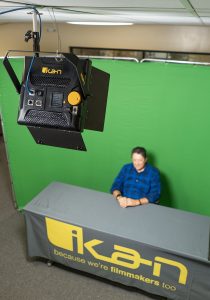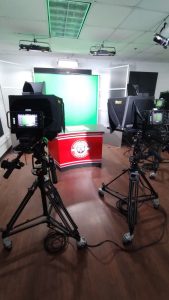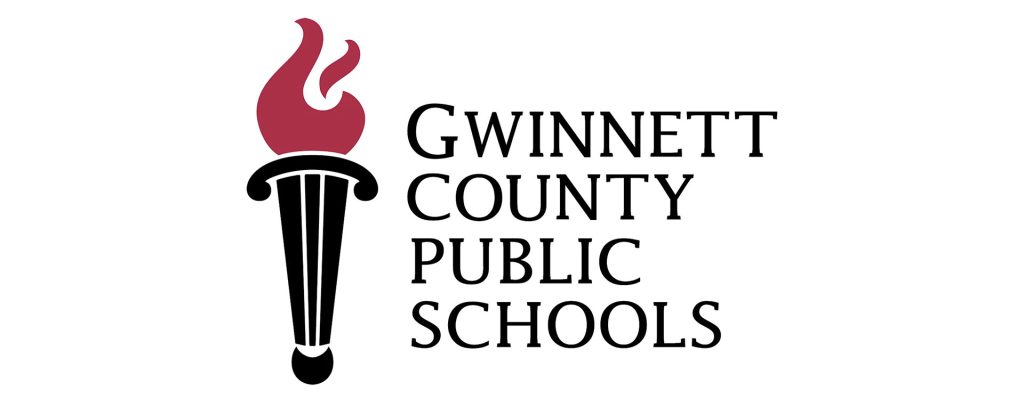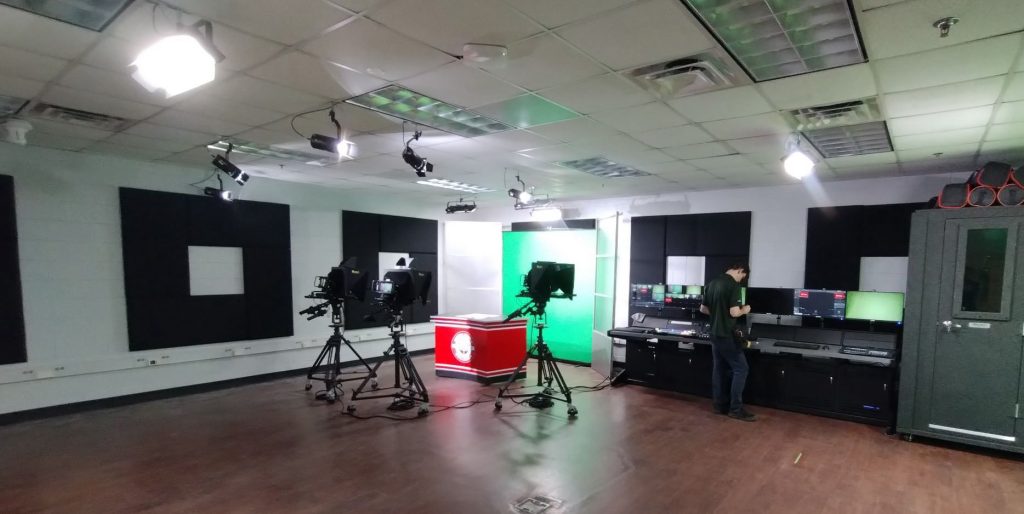Future-Proofing Success: How Gwinnett County Public Schools Simplified Their Technology Roadmap with Ikan
You didn’t get into media production to become an infrastructure expert. You chose this path to tell stories that matter, create content that moves people, shape how organizations communicate their vision to the world.
Yet here you are, spending another afternoon in meetings about electrical load calculations instead of creative briefs. Your latest brilliant concept for a multi-camera production setup sits gathering dust because someone mentioned “fire code implications.” The junior creator you wanted to hire chose your competitor because their studio “felt more professional.”
This is the hidden tragedy of modern media production: the most creative minds in our industry spend more energy fighting buildings than crafting content. We’ve accepted that infrastructure complexity is just the price of professional production. We’ve normalized the idea that real studios require real suffering.
Gwinnett County Public Schools (K-12) refused to accept that narrative. Their transformation of 40+ schools into content creation powerhouses didn’t just solve a technical problem. It redefined what’s possible when infrastructure serves creativity instead of constraining it.
The Creative Cost of “That’s How it’s Always Been Done”
Let’s be honest about what traditional broadcast infrastructure really costs you. Not the dollars, though those hurt enough. The creative cost. The professional cost. The human cost.
Every time you self-censor an ambitious idea because “the building can’t handle it,” a piece of your creative identity dies. You entered this field to push boundaries, not to work within arbitrary electrical limits. Yet traditional broadcast lighting turns every creative session into a negotiation with physics. Will this setup trip the breaker? Can the HVAC handle the heat load? How long before talent needs a break from the temperature?
Your peers at organizations with modern infrastructure aren’t just producing more content. They’re producing more ambitious content. They experiment while you calculate. They iterate while you wait for permits. They’re becoming known for innovation while you’re becoming known for making do.
The talent equation becomes equally painful. The next generation of content creators grew up with YouTube studios and streaming setups where technology enables creativity instantly. When they interview at your facility and see the complexity, the workarounds, the compromises, they see a career dead-end. The best creators want to work where their imagination is the only limit.
Consider what happened at Gwinnett County. Before their transformation, their media programs struggled to attract student interest. The equipment felt dated. The workflows felt ancient. Students saw media production as something that happened elsewhere, in real studios, not in their schools.

The Moment Everything Changes
Power over Ethernet represents more than a technology shift. It’s a philosophical revolution in how we think about broadcast infrastructure. Instead of forcing creativity to conform to electrical systems designed for factories, PoE makes infrastructure invisible to the creative process.
When Gwinnett’s media teachers first encountered Ikan’s PoE lighting systems, their skepticism was understandable. How could network cables deliver broadcast-quality lighting? The very simplicity of it seemed suspect to professionals accustomed to complexity as a proxy for quality.
The demonstration changed everything.
Not because the technology was impressive, though it was. But because of what happened when the fire marshal reviewed the plans. After years of having projects killed by code requirements, hearing “this doesn’t even require inspection” felt like creative liberation.
Suddenly, infrastructure became invisible. IT departments could handle installation. Teachers could adjust lighting from tablets without stopping instruction. Students could master the system in minutes, not weeks. The technology disappeared into the background where it belongs, leaving only creative possibility in the foreground.
Because the simple truth is that teachers want to focus on teaching storytelling, not troubleshooting.
The Creative Renaissance: 40 Studios, Countless Stories
The transformation started with three pilot studios, each in a different type of school. The elementary school had no dedicated media space. The middle school had a closet converted to a “studio” that nobody used. The high school had traditional equipment that required a full period just to set up.

Just a few days later, each school had a fully functional broadcast studio. Not a compromise. Not a “good enough for education” solution. Professional-grade production capabilities that happened to be simple enough for a fifth-grader to operate.
The student response revealed the true impact. Participation in media programs radically increased. Students who had never considered media production suddenly saw themselves as content creators. Morning announcements transformed from obligatory information delivery to must-see daily programming.
The production quality spoke for itself. Student films could now pursue festival recognition. Sports broadcasts might attract college recruiters not just for the athletes, but for the student production teams. Community engagement soared as parents discovered their children creating content that rivaled professional broadcasts.
But the deeper transformation was in creative confidence. Students could stop asking “can we do this?” and start asking “what should we do next?” Teachers stopped managing equipment and started mentoring storytellers. The entire district became a laboratory for creative expression.
The standardization across 40+ sites created unexpected benefits. Students moving between schools would find familiar systems, maintaining creative momentum. Teachers could share techniques and content across the district. What started as individual studio upgrades evolved into a district-wide creative network.
Your Pathway to Creative Liberation
The Gwinnett transformation isn’t unique to education. Whether you’re fighting infrastructure battles in corporate communications, house of worship media ministries, or independent production facilities, the same principles apply.
Start by calculating your true creative cost.
Not just the hours lost to workarounds, but the ideas that died in planning. The ambitious projects that became safe choices. The talent that went elsewhere. The reputation for innovation you’re not building.
When building your case for change, focus on creative liberation, not technical specifications. Stakeholders who might resist infrastructure investment will champion creative empowerment. Frame the conversation around what becomes possible, not what becomes easier.
The pilot approach Gwinnett used works everywhere. Choose your most visible, highest-impact space first. Document not just the installation efficiency, but the creative explosion that follows. Capture the moment when someone realizes they can finally execute their vision without compromise.
Most importantly, reframe your relationship with infrastructure. It shouldn’t be something you manage. It should be something you forget exists because it simply works. Every moment spent thinking about electrical loads is a moment stolen from creative innovation.
Choose Your Creative Future
Two futures exist for media professionals today. In one, you continue the daily battle with infrastructure, watching your creative energy drain into technical workarounds while competitors surge ahead. In the other, you follow Gwinnett’s lead and make infrastructure irrelevant to your creative process.
The education market, once considered technologically behind, now sets the standard for creative empowerment through simplified infrastructure. Their students create with a freedom that many professional facilities can’t match.
Gwinnett deployed over 40 professional studios in six months. In that same time, traditional approaches might have completed permits for one. They transformed their entire district’s creative capacity while others were still negotiating with electricians.
The question isn’t whether you can afford to simplify your infrastructure. It’s whether your creative future can afford the complexity you’re accepting today.


